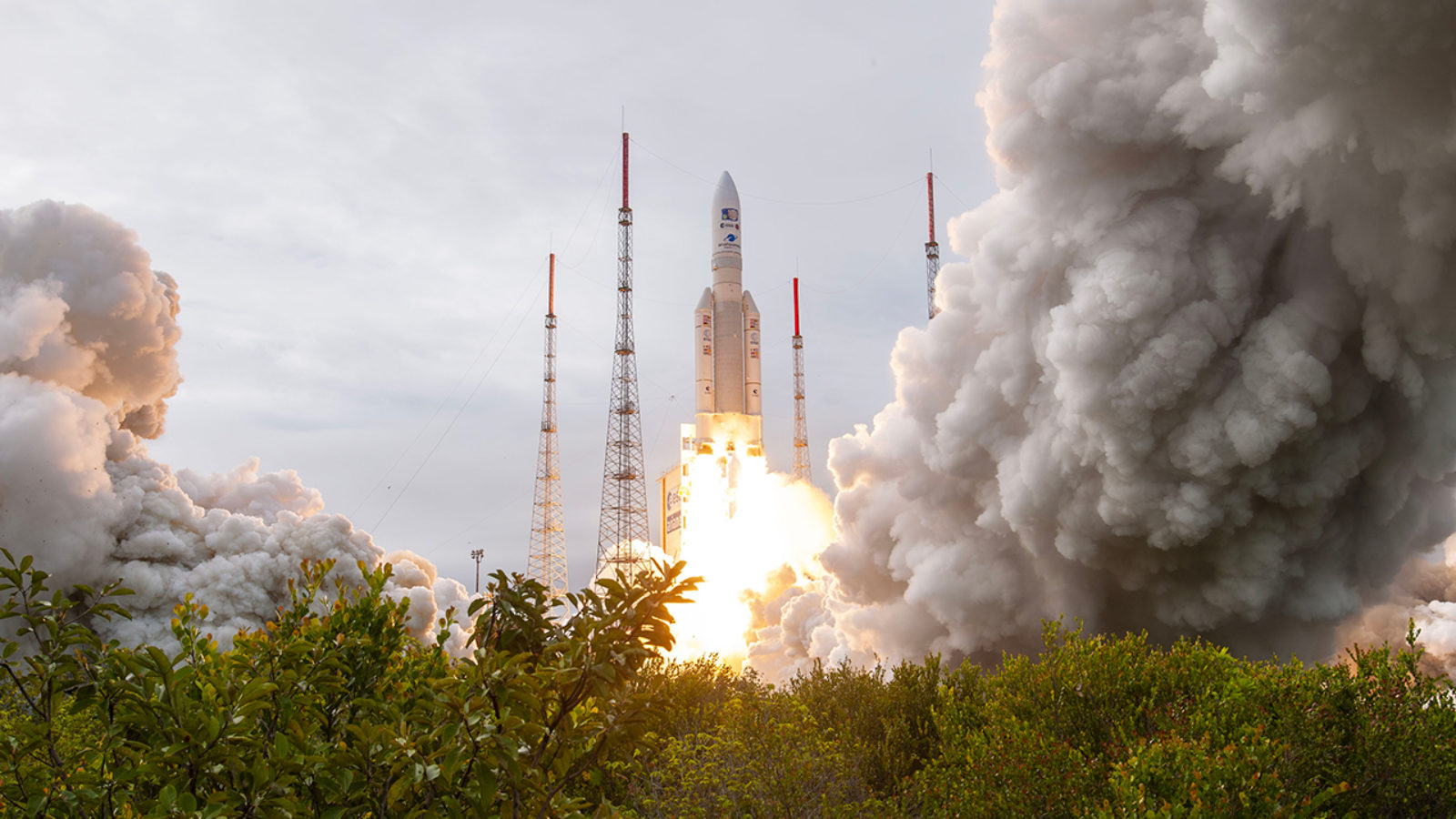
Rotate your tablet
for a better experience


Rotate your tablet
for a better experience

With the JUICE probe successfully launched by Ariane 5 and now on its way to Jupiter, we talked to Stéphane Leboucher, ArianeGroup’s Head of Ariane Mission Preparation and Customization, about the technical aspects of the launch window.
When you’ve got to go, you’ve got to go! JUICE lifted off on April 14, at precisely 12:14:29 UTC. To understand why it had to be so precise, we must look at the spacecraft’s particular trajectory to Jupiter and its icy moons. En route, the JUICE probe will be making several gravity assist fly-bys (read the article on gravity assist fly-bys https://www.ariane.group/en/news/spacecraft-may-the-force-be-with-you/) before reaching its destination. It will fly past the Earth (or the Earth–Moon system) three times as well as Venus (specifically in this order: Earth–Moon, Venus, Earth, Earth) before being “catapulted” out to the Jupiter system. Once there, it will again use the same technique, but this time for braking and entering orbit around Jupiter and its moons.
Stéphane: The launch periods were primarily dictated by the probe’s various gravity assist fly-bys. Given the positions of the celestial bodies in the coming months, April offered the best moment for an optimal trajectory for JUICE. Failing that, but not such a good option, would have been to launch in August.
Stéphane: On this mission, we had no major sunlight constraints (apart from having to protect JUICE’s instruments) unlike with the James Webb launch [ed.: it was important for the JWST telescope to be able to open its solar panels as rapidly as possible in order to save fuel]. Here also, the launch time (12:15 and one second UTC for an April 13 launch or 12:14 and 29 seconds UTC for an April 14 launch, with about 30 seconds added for each subsequent day should further postponements occur), was linked to JUICE’s trajectory, to the time and place where we had to deliver the probe to enable it to perform its first maneuvers before the first gravity assist fly-by.
Stéphane: ArianeGroup’s mission ended shortly after the separation of JUICE from Ariane 5 in its Earth escape orbit, as by that point the probe has sufficient maneuvering capacity to make up for any injection deviation. However, Ariane 5’s injection was perfect and the initial orbital corrections planned for the probe proved to be unnecessary. Our mission ended about 1,000 seconds after separation of the probe, once the rocket’s upper stage had completed all its distancing and safeguarding maneuvers with respect to the probe, the Moon and Earth.
Stéphane: For this mission we did not have to make too many adjustments to the launcher to accommodate the spacecraft, as compared to the James Webb mission for which the rocket’s fairing had to be adapted. For JUICE, we did however have to check that the Ariane 5 ECA, normally used for dual payload missions, was suitable for this daytime launch single-payload mission. For example, we adapted the Ariane 5 launcher control pilot. This is similar to what we did for the BepiColombo flight, even if JUICE’s orbit and escape velocity here were different. The idea is that the launcher impart as much velocity as possible so that the probe can save its own fuel for any orbital corrections that may be necessary and optimize its gravity assist fly-bys.
Stéphane: This was the last-ever scientific mission to be launched by Ariane 5 for the European Space Agency, and as such more high-focus than our standard dual payload GTO missions. Having said that, and as I have often said in the past, when the payload is loaded, the launcher doesn’t at that point “know” what it will have to do. It simply follows what the flight program tells it to do. It’s up to us to check that the program is the right one. We were just as attentive in preparing this Ariane 5 ECA as we are for any other Ariane launch mission.
Of course! Being part of a major space science mission is always a thing to be proud of. For example, for Rosetta, we followed the probe over 10 years during its journey to the comet 67P/Churyumov–Gerasimenko. We always want to keep tabs on the precious spacecraft which we have the privilege of carrying into space.
While we wait for news from JUICE, you can watch its incredible launch again.